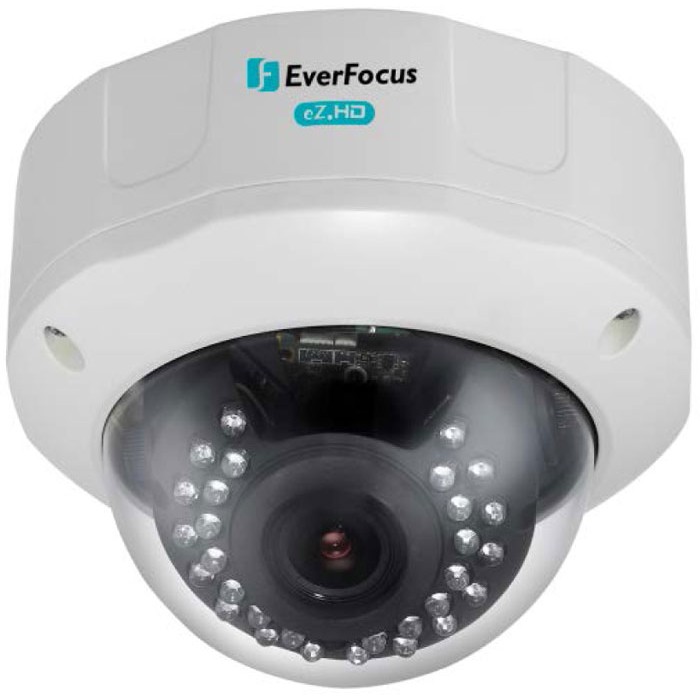If you’ve followed this blog at all, you know how highly we think of surveillance cameras as an effective security measure. These cameras provide you with a few important types of security. For starters, they provide you with both live and recorded footage of your property at all times. This allows you to check on things in real time, as well as after an event when needed. In addition to capturing crime or suspicious activity, cameras also act as a deterrent. After all, criminals seeing a visible surveillance presence will often choose a new target. Of course, installing any type of camera will increase security on a property with no surveillance. However, the sheer amount of surveillance choices can overwhelm many customers. In this post, we aim to educate those looking for help with choosing the right cameras for the job.
For starters, we’ll look at how we help customers select cameras that provide the view they need. This includes an overview of the various resolution offerings and lens types of different cameras. From there, we’ll see how you can choose the best camera type to secure your property. Specifically, we’ll explain how your installation location and environment shape what type of camera you should install. Now, let’s dive in with a look at finding cameras that provide the best views for your application.
Finding the View You Need
When we help customers design a surveillance system, we always begin by asking them “What would you like to see?” While a simple question, the answer helps quite a bit in our system design. In this section, we explain how what you need to see helps determine what type of camera you need. First, we’ll show you how cameras’ resolutions can vary, and when you might need extra resolution. Then, we’ll turn our attention to selecting the right type of camera lens for you!

Understanding your options when it comes to your cameras’ resolution and lens type greatly increase your surveillance system’s effectiveness.
Understanding Your Resolution Options
Camera resolution has long remained one of the most important ways of differentiating cameras. Simply put, a camera’s resolution provides a tangible measurement of its picture clarity. As we pointed out in our post on Choosing IP vs Analog Cameras, every image captured by a camera is made up of hundreds of thousands — if not millions — of smaller images. Each of these images is called a pixel, and one million of these pixels is called a megapixel.
Full high-definition television screens project an image containing 2.1 megapixels. Therefore, you may think a 2.1-megapixel camera would project about the best picture possible. However, cameras with higher resolutions allow you to zoom in closer on an image before the image begins to “break up,” a process known as “pixellating.” For those looking to have the ability to zoom in closer on an image, we recommend cameras in the 4- to 8-megapixel range. Customers who only wish for an overall view of their property can utilize basic 2.1-megapixel models. However, those looking to see long distances with great clarity must choose more expensive models with a higher megapixel count. Let’s now focus on another way that different cameras provide you with differing views.
Selecting the Lens That Works Best
Of course, choosing cameras with the right resolution greatly increases your chance of a successful security experience. However, you still have another equally important decision to make. A camera’s viewing capacity can vary greatly based on both its resolution as well as its lens. Some cameras have lenses that we cannot adjust at all after installation. These cameras, called “fixed lens” cameras, do not allow for any picture adjustment after installation.
Other cameras do give us the ability to zoom in and out, as well as left and right, after installation. These cameras have “varifocal” lenses that allow customers to change what their cameras see after installation. While these cameras generally cost more than their fixed-lens counterparts, they also provide a greater level of detail and clarity when it comes to viewing farther-away targets. We can get lenses that can comfortably focus on areas hundreds of feet from where we mount them. Therefore, we always work with customers to find the best types of lens for their cameras based on what they want them to “see” best. Now, let’s look at some aspects of choosing the right cameras based on where you install them!
Determining the Best Camera Type for the Job
As we’ve seen, finding the camera that provides the viewing capability you need can get quite involved. Moreover, you must also consider a couple other factors when choosing the right cameras. In this section we’ll look at how the location of your surveillance system can change the type of camera you need. Specifically, we’ll look at choices required based on individual camera installation location, as well as some choices that you must make based on your property’s overall environment.
Keeping Your Installation Location in Mind
When designing a camera system, we must choose cameras based on the locations they are being installed. For example, we can choose between “bullet” style cameras with exposed lenses, or “dome” cameras that have covered lenses, but experience more exposure to weather. We often prefer installing bullet cameras on the sides of buildings. These cameras provide a great shield against their views being affected by rain or snow cover affecting their view. However, they also have a “commercial” look that some residential customers prefer to avoid. Additionally, dome cameras often have vandal-proof features due to their layer of heavy glass that protects the lens. This can prove useful in applications where vandalism may be a threat.

Vandal-Resistant cameras, such as this one by Everfocus, provide a strong measure of resistance against physical attacks.
Moreover, you must also consider the levels of light where you wish to install cameras. Cameras have different technology to “see” in the dark. The most common (and perhaps most effective) method involves placing infrared (or “IR) illuminators around a camera’s lens. These lights help improve a camera’s night vision tremendously. When designing cameras, manufacturers create some products with added IR illuminators for installation in extremely dark areas. Now that we’ve seen how lens type and IR capability affect cameras’ performance, let’s examine the rating system that allows you to choose cameras with the proper level of durability.
Installing Cameras with the Proper Rating
Once you choose from the basic categories and types of cameras you wish to install, you still have a couple details to iron out when purchasing cameras. For example, a camera meant for indoor use will not last very long in difficult outdoor conditions. On the other hand, we also do not recommend installing a camera designed for outdoor use indoors. If you do so, you may end up paying for features that you do not use. Many properties, such as those near dams or in cold-weather climates, even provide more than the usual weather-related environmental issues.
One way to make sure you select the proper camera is by checking its “IP Rating.” The “IP” stands for “Ingress (or ‘Entrance’) Protection.” A camera’s IP rating is shown with the letters “IP” followed by two digits with varying values (e.g. “IP 67”). The higher the number of each digit, the more resistance provided by the camera. The first digit represents protection against solid objects, on a 0-6 scale. To achieve a “6” on this scale, an object must display resistance to dust. Most cameras are dust-tight, so almost every camera has an IP rating that starts with a “6.” The second digit generally ranges from a “5” to an “8.”
An IP65 camera can withstand jets or sprays of water, while an IP68 camera can withstand continuous water submersion under specific conditions. Obviously, IP66 and 67 cameras lie in between those two extremes. If you do have reason to believe your cameras face potential weather or element damage, we recommend cameras with an IP67 or IP68 rating. Doing so will ensure that your cameras can withstand the wear and tear of outdoor use for years to come.
Choosing the Right Cameras for Your Security Needs
We hope that this post helps you with choosing the right cameras for your own application. Furthermore, we encourage you to contact us with any questions this post may raise for you. We know you have a lot of options when it comes to installing cameras — or any security, for that matter — and we’d love to help you. Additionally, we also invite you to take advatange of our free site survey program. We provide complimetary security audits and equipment quotes to both new and existing customers alike. While on site, we can address any security concerns you may have. Moreover, we can also make suggestions of our own based on observations made during our visit. Together, we can help you install a complete surveillance system, with the cameras that suit you best, to help keep your property as secure as possible!
